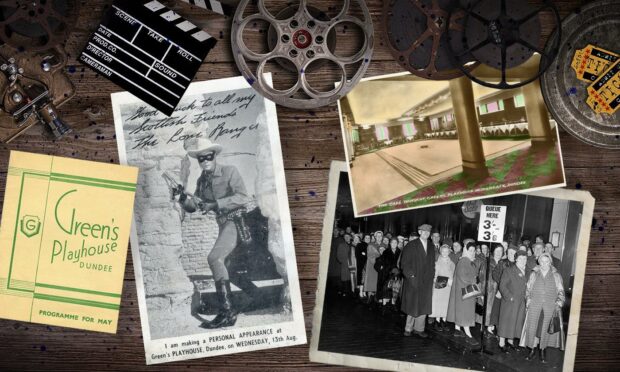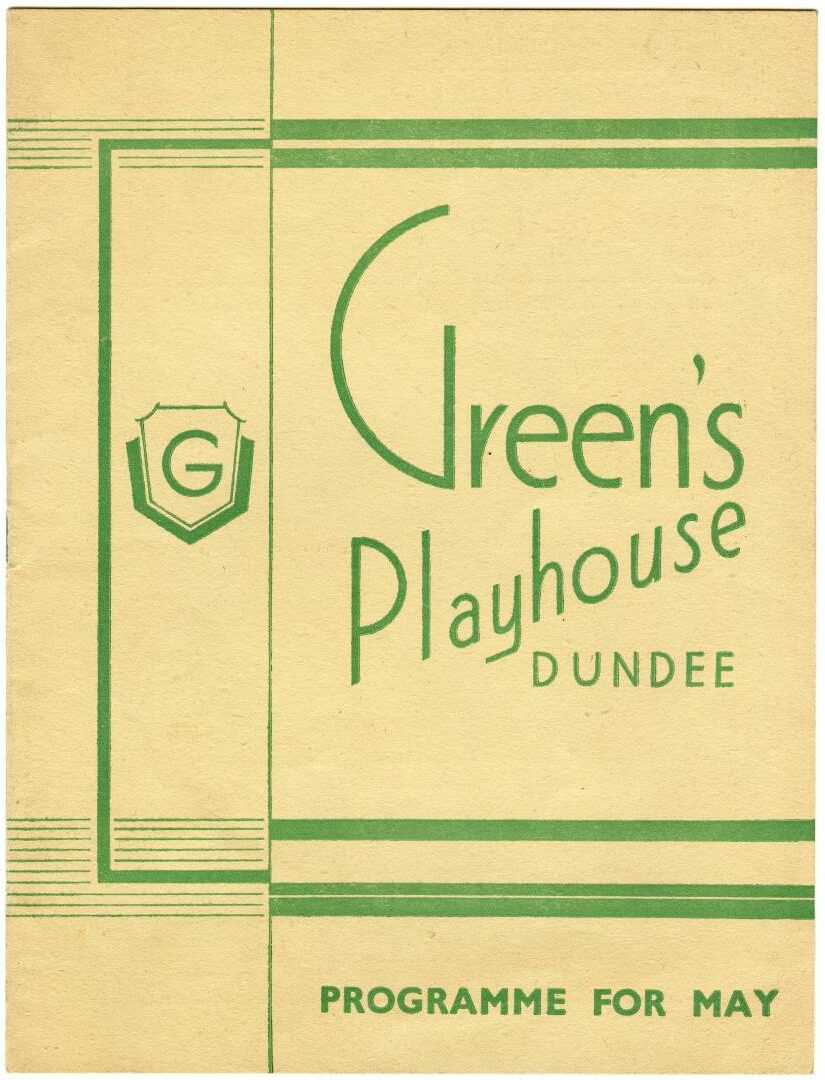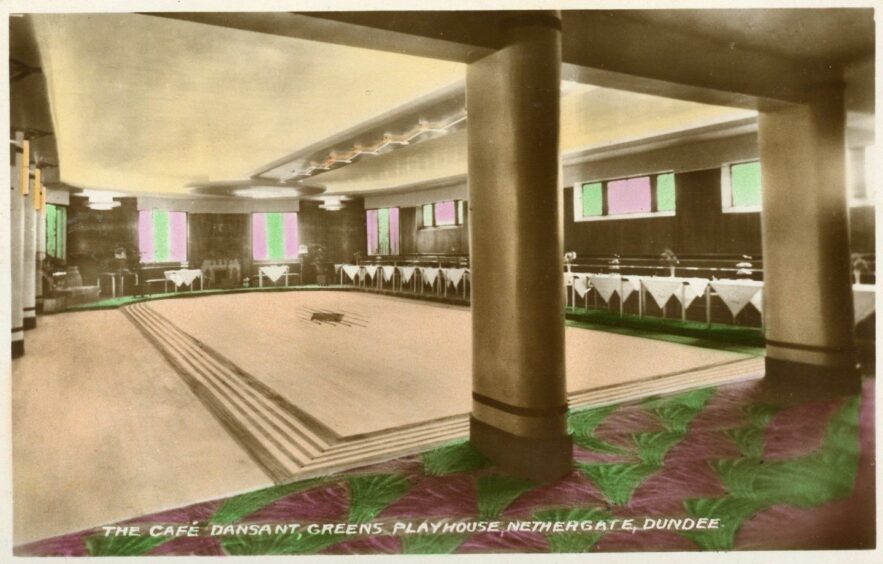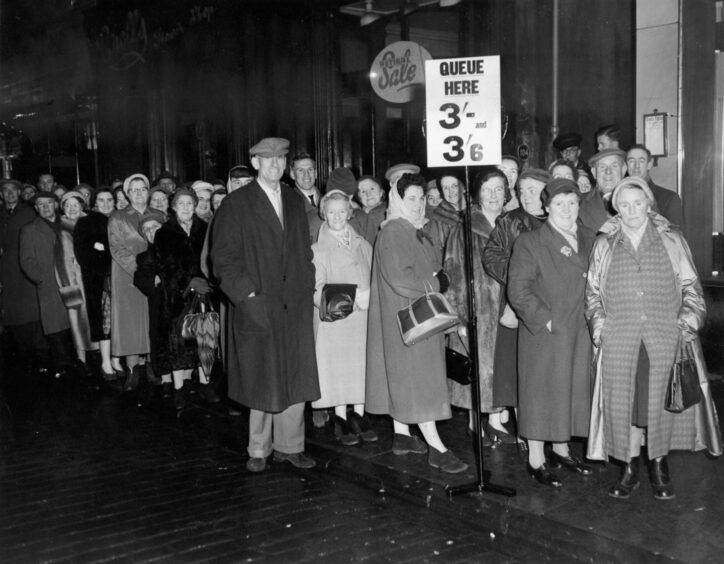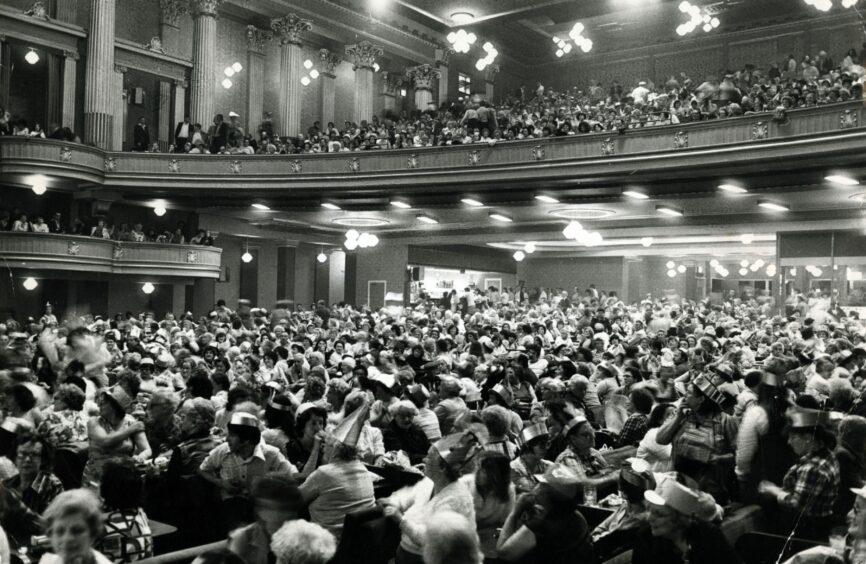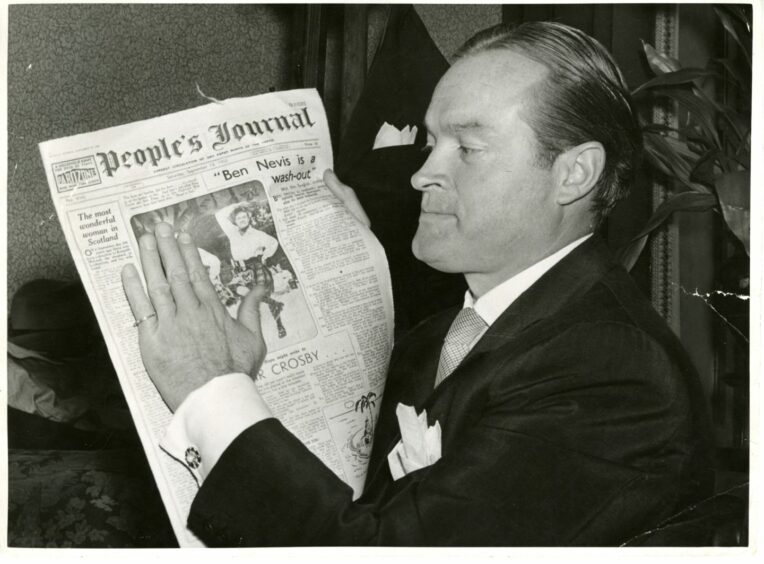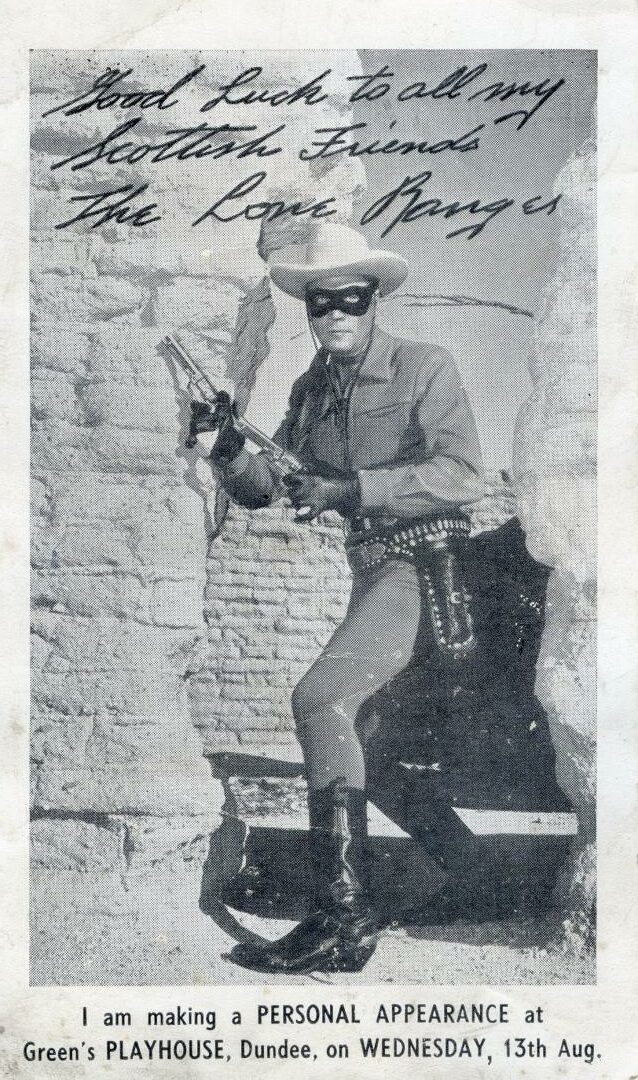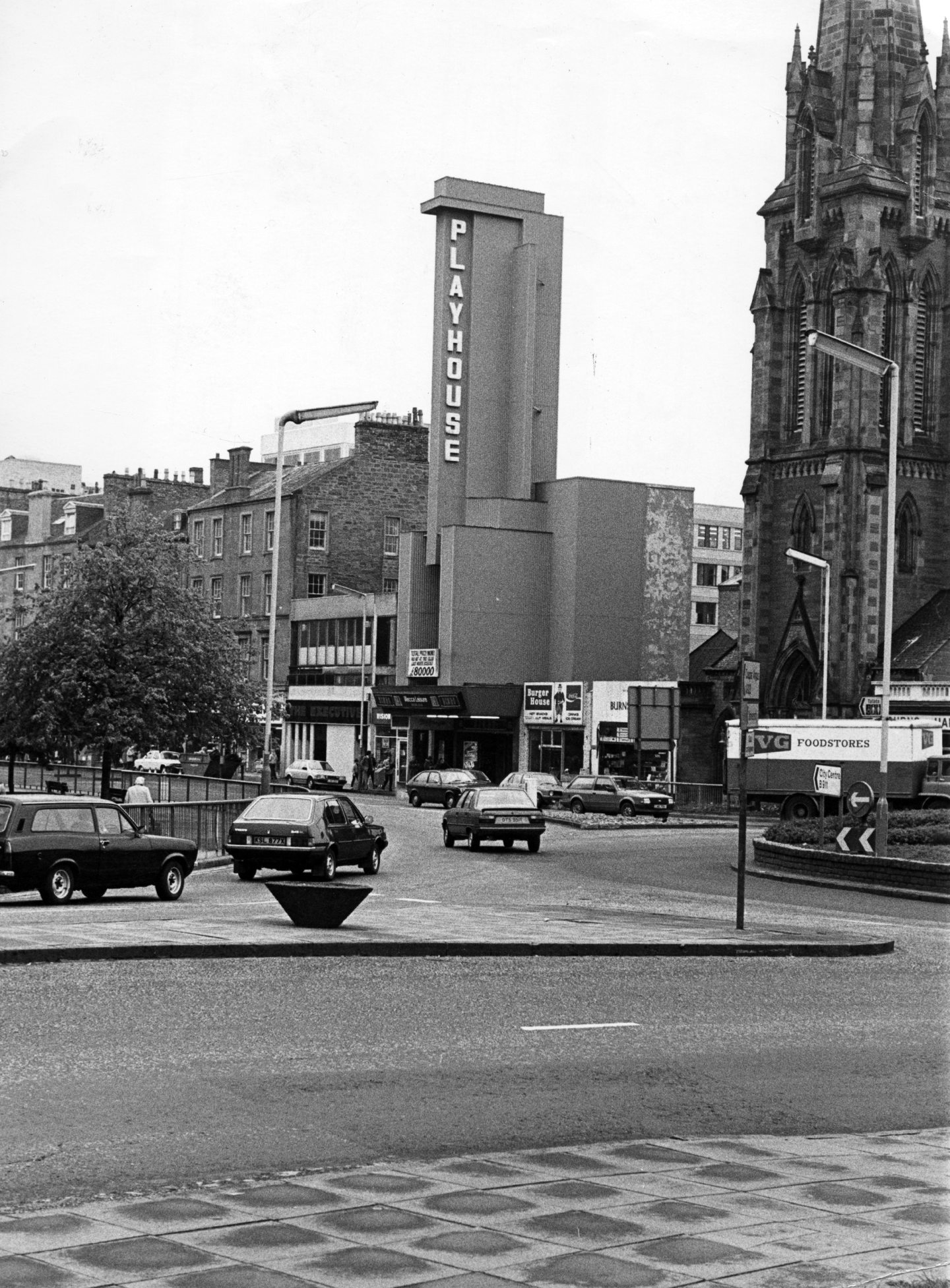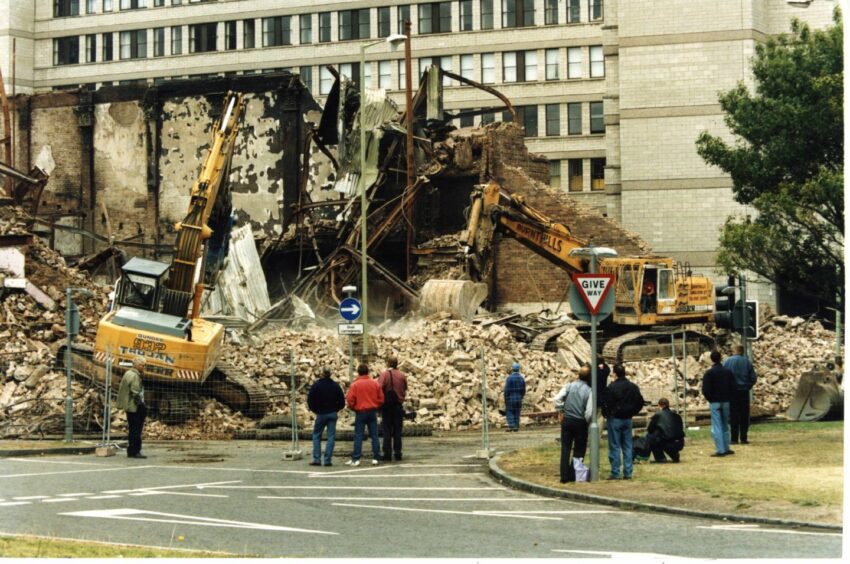Green’s Playhouse was the Dundee ‘super-cinema’ that dominated the city skyline with its 85-foot-tall steel and glass tower.
Dundee’s first cinemas had been built from 1910 but a building frenzy was sparked to satisfy the demand of soaring attendances at talking pictures.
The iconic art deco building in Nethergate was unveiled in 1936 after being designed by John Fairweather, who was the architect for the Green’s Playhouse cinema chain.
The auditorium could hold more than 2,500 people in the stalls and 1,500 in the circle areas.
That was just 100 short of the capacity of the Glasgow Green’s Playhouse total, which was the largest cinema ever built in Europe.
A report on the following day’s opening of Green’s Playhouse featured in the Evening Telegraph in its March 3 1936 edition.
“First impressions on viewing the interior of the Playhouse are of amazement that such a compact building should contain the tremendous number of 4,100 seats.
“Immediately the question arises, “How did they get them in?”
“Going on the analogy of the old saying that you can’t get a quart into a pint pot, one would imagine that for such accommodation a building of tremendous vastness was necessary.
“Yet the Playhouse interior is far from overpowering in its vastness.
“The only comparable building in Dundee in point of seating accommodation – the Caird Hall, with 3,300 seats – gives a far greater impression of distant immensity.
“The Playhouse is almost intimate in comparison with the Caird Hall, and yet it seats 800 more people.
“The secret, of course, is proportion.
“There are no faraway recesses about the Playhouse.
“At the back of the balcony or the stalls one is still at reasonable distance from the screen, and the banks of seats are so arranged that there is an uninterrupted view for every part of the house.
“Another feature of the Playhouse is its decoration.
“The plaster is finished mainly in deep and light golds, which reflect the play of the concealed lighting in all its lovely colours.”
Perfect view of silver screen
The seating of the stalls was arranged in four blocks, which were “curved so that spectators in each of them are at a true and comfortable angle to the screen”.
A welcome feature was the absence of pillars, the main support of the balcony being a 30-ton girder spanning the full width of the theatre.
The approach to the balcony was by way of an imposing white marble stairway, flanked by mirror, and glass panels illuminated by neon tubing.
There were two boxes on either side at the balcony level and three on either side below, from all of which a perfect view of the screen could be obtained.
These were furnished with richly upholstered twin settees.
Architect John Fairweather was assisted by Joseph Emberton, who was responsible for the design of the 85-feet-high tower over the entrance, the entrance vestibule and grand foyer and the tea room, which also served as a ballroom.
Green’s Playhouse opened on March 4 1936 with the American romantic comedy We’re In The Money and Lady Tubbs featuring Alice Brady.
At the peak of film-going there were 25 cinemas in Dundee, which meant the city had more cinemas and seats per head than anywhere else in the UK.
The brief boom was brought to a shuddering halt by the rise of television and the silver screens suffered widespread closures.
Like many cinemas, the Playhouse turned to bingo as attendances declined following its closure as a cinema in January 1968.
Brian King, author of Dundee in 50 Buildings, said the Playhouse enjoyed personal appearances by film stars Anna Neagle, Charles Laughton and Bob Hope.
Lone Ranger star Clayton Moore appeared in August 1958 as part of a national tour and had to fight his way through hundreds of children to get to the Playhouse.
Brian said: “The Green family owned a Playhouse cinema in Glasgow and envisaged a chain of these throughout the country.
“Having purchased the ground between Nethergate and Yeaman Shore, the Greens brought in John Fairweather, who was responsible for the Glasgow cinema, to design the Dundee one.
“The sheer scale of the Playhouse was unlike anything seen in the city before with seating for more than 2,500 in the stalls and in excess of 1,500 in the balcony and boxes.
“Despite this, it was reported that the building was ‘far from overpowering in its vastness’.
“Views of the screen were good throughout and a 30-ton girder supporting the balcony meant that there were no pillars.
“The facilities also included a 200-seat café and a make-up room for female visitors.
“The décor was luxurious throughout, as the vast terrazzo entrance foyer leading to a marble staircase immediately suggested to the visitor.
“Indeed, the Greens had hoped to replace the Nethergate pavement with an extension of the terrazzo but were refused permission.”
Brian said they were allowed to build the 85-feet-tall steel and glass tower with the cinema’s name in neon letters.
The letter ‘u’ sat out of kilter: “We want ‘u’ in” being the Greens’ slogan.
Another slogan: ‘It’s Good – It’s Green’s’ was woven into the building’s custom-made carpets.
Building destroyed in fire
The marked decline in cinemas in the 1970s and 1980s was partly due to the recession and also the uptake in out-of-town multiplex cinemas.
A devastating fire in August 1995 destroyed the former cinema building.
It was rebuilt with only the restored tower remaining of the Playhouse today.
The art deco tower had to be hauled down as part of demolition work but owner Mecca never wavered from its intention to build anew on the site.
It was only too happy to comply when Historic Scotland called on the reinstatement of the tower as part of the new £8.4 million development.
The centre spine of the six-tonne structure was actually part of the original tower that was bolted and cemented in securely by construction workers in 1997.
More like this:
How Dundee actress sang her way into the spotlight in The Wicker Man
Chariots of Fire at 40: St Andrews beach reshoot changed movie history
When there was No Time to Die for James Bond writer Ian Fleming’s Dundee grandfather
